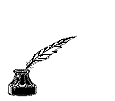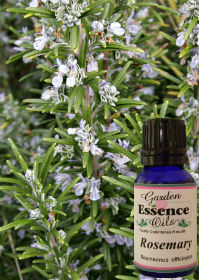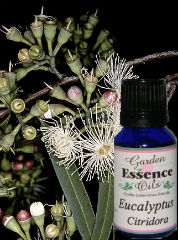This
is an Information Only
Site to Support
Garden
Essence Oils .com
. ...........Essential Oil
Recipes... ...........Essential Oil
Recipes...
.
Basic Recipes for
making your own cosmetics, bath products, soaps,
etc. with YOUR OWN special essential oil Combinations
(never use metal and be careful
with plastics - glass is best)
.
Brought to you by
Garden Essence Essential Oils
www.GardenEssenceOils.com
.

This Page is
always being added to so you need to Book mark this
page!
.. .Body
Powder/Baby powder
(use less and mild oils for baby
powder such as lavender or chamomile)
8 ounces arrowroot
powder
(herb) or cornstarch or a combination of both.
4 ounces baking soda, extends
the base and gives deodorizing benefits.
add 15 drops of your favorite
essential oil or essential oil combination -
Blend thoroughly and put in
container.
1/4 or 1/2 as much for baby powder
- corn starch is probably best & leave out
the baking soda.
The best healing baby powder for
diaper rash was given to me by a little old woman when
my oldest daughter was a baby (she's now 41)
Brown flour in a dry pan with no oil and apply to
bottom.
Lip Balm
1/2 cup (4 oz.) almond
oil or other carrier oil (not mineral
oil)
1 oz. beeswax
(If too soft add more beeswax- too hard add more
carrier oil.)
1 tbsp. honey or 1 capsule of
vitamin E
(squeeze
vit.
E
from
pierced
capsule
- throw capsule away)
Add a few drops of essential
oil. (Do not exceed 5 drops at least the
first time.)
Combine carrier oil and beeswax,
and warm oil to melt beeswax. Stir in honey or
vit. E and
then add the Essential oil.
Pour into small jars or balm tubes to harden.
You can make a solid perfume
using the same method - just add more essential
oil. I always use pure essential oils, however,
you could substitute perfume oils. You might
also use a healing combination such as "NoMo
Pain" which smells great.
Essential Oil cream
1 cup carrier oil or cocoa butter - (do not use mineral
oil)
2 1/2 Tbsp. beeswax
1 cup water (luke warm) Distilled, aloe vera juice or
Rosewater
30 to 50 drops essential oils
In a glass measuring cup add oil and beeswax. Put
the measuring cup into a pan of water - the water needs
to go at least 1/2 way up the outside of the measuring
cup. Heat until the beeswax melts. Remove
cup from pan. Cool a little but do not let
the beeswax harden. Test by carefully putting
finger in the wax mixture. It should not be
uncomfortable, and a film of wax should form at the
edge. Pour luke warm water into a blender - remove
center ring. Turn blender on high speed and slowly
add the oil and beeswax mixture. It is best to use a
wide mouth funnel to keep splattering to a
minimum. The temperature of the oil and how steady
the oil is poured will have some bearing on the finished
product. There is some leeway and perfection is
not necessary.
This should begin to harden after about 3/4's of the
oil has been added. At this point you may need to
stir - preferably use a wooden chopstick along the top
edges and be careful to stay away from the blades in the
center. Slowly add the rest of the oil until it
becomes too stiff to take any more oil or until all the
water is dissipated. Sometimes there is some water
left - pour it off or absorb with a paper towel.
At this time you should have a thick, beautiful
cream. Now add the essential oils and turn on the
blender just enough to combine the essential oils. Do
not over blend. Put in jars. May
be refrigerated for a longer shelf life.
Lotion - follow the
above directions with these quantities of
ingredients
3/4 cup carrier oil or cocoa butter
1 cup distilled water, Aloe Vera Juice or
Rosewater
2 Tbsp. beeswax
30 drops Essential Oils
Cream recipe - very
simple #2
2 oz carrier oil or a mix of carrier oil and aloe vera
and 1 - 3 pea sized balls of beeswax.
If stirred before it is completely cool and hardened it
becomes gritty. Add 5 to 10 drops of Essential
oils after it has cooled and hardened to maintain the
strength and integrity of the essential oil.
This can also be made into a body scrub if made quite
runny and mixed with
salt and eos.
Rosewater
2 cups distilled water
1/4 cup vodka or Everclear (liquor store)
1/2 cup red rose petals (red gives best color)
Best time to pick is between 10:00 A.M. and Noon after
dew is off but before the sun has released their
essential oils.
May add up to 15 drops rose oil if petals don't have
enough scent.
Combine water, vodka or everclear and petals in a
covered jar - place in the sun.
It takes less than a day for the oils and color to be
extracted from the petals by the sun.
Strain through a coffee filter into a covered bottle and
refrigerate.
It needs to be used within 2 weeks.
Glycerine and Rosewater Lotion
May add an equal amount of vegetable glycerin to the
above recipe. Shake well and bottle.
May be used all over the body.
Bath Crystals
1 cup salt - rock, sea, or mineral salt
3 to 5 drops - Vegetable food coloring
(shake or mix well after each 2
drops added until it reaches desired color.)
20 to 25 drops - Essential oil Shake or mix well
until oils are thoroughly absorbed.
They will sparkle like jewels if you add a tsp of
glycerine.
Salt melts and softens the water, the glycerin will
moisturize your skin and the color will vanish.
.
Soap Making
By Busy Bee Cleaning Service
Keeping Clean by Making your own Soap https://www.bbcleaningservice.com/making-your-own-soap.html
History
People have been making their own soap for hundreds of
years. Traditionally people would begin by making their
own lye out of ashes. Today you can buy the lye in the
store. Many people made their own soap because they did
not have easy access or the ability to buy the soap from
a store. Soap making has become popular again as people
begin to want greener alternatives, and more control
over the materials included in their soap.
Lots More great Info!
Here are some links
from https://www.fragrancex.com/Fragrance-Information/traditional-soap-making.html
See their logo
>>>>>>>>>>>>>>>>>>>>>>>>>>>>>>>>>>>>>>>>>>>
FFrom
old lye company leaflet:
Notes on
Soapmaking
Preparing
Fat
Basic
Soap Recipe
Temperature
Chart
Separation
and Reconciliation!
Reclaiming
Soap
Variations
Other
Recipes
Using
a Stick Blender
Links to separate pages:
Modern
Soapmaking
Procedures
Where
to
Find Ingredients
Design
Your
Own Recipe! (including
Saponification & Properties of Oils
Charts)
All-Vegetable
Soaps
and Recipes
Castile
Soap
Recipes
No
Scale? Soap Recipes Using Fluid Measures
-
Make your own sensational suds
Actually, soap is surprisingly easy and safe to
make. You just need to be careful.
As you may recall from school, soap results from the
chemical reaction between fats, which are acids, and
lye, a base. Our soapmaking foremothers made a weak lye
solution from wood ashes, but, lucky us, we can go to
the supermarket and buy a truly scary modern convenience
in a can, the aptly named Red Devil lye.
The truth about lye: It is not your friend. It is, in
fact, the basest of bases - that is, it will hurt you if
it can. Leave it unattended and someone will drink it
and die. Neglect to use safety glasses just once and it
will splash you squarely in the eyes.
But properly harnessed, lye will turn ordinary Crisco,
lard or vegetable oils into a thing of beauty and
utility. The lye disappears, married off molecule by
molecule with the fat, leaving a mild and moisturizing
bar with a high percentage of natural glycerin.
Your homemade soap will be kind, even healing, to
troubled skin; creams and lotions will become as
redundant as a wood stove in July. Once you try homemade
soap, you won't go back.
But it's not always an easy sell. When I tried to give
my 19-year-old daughter a bar specially formulated for
oily skin, she took a step backward. "No way," she
declared. "I'll turn into one big zit." Two weeks later,
she called home to announce that her face had cleared
up. Would I send some tea tree-peppermint soap for her
roommates?
Older folks tend to be wary of "lye soap," those hard
cakes made from lard that Grandma used for scrubbing
everything from laundry to babies. Most people will
marvel at your handcrafted soap, although it may take a
little coaxing to get them to use it. But once they do,
they'll be asking for more.
Which is a good thing, because I'll let you in on
soapmaking's dirty little secret: Once you start, you
won't want to stop.
In fact, if Oprah had followed her grandma out to the
soap vat and started stirring, she might still be in
Mississippi today.
How to
First and foremost, arm yourself with safety glasses
and thin rubber gloves. Next you'll need:
- A 4-quart stainless-steel pot to heat the oils. Do
not use aluminum, as it reacts with the lye.
- A heatproof 32-ounce measuring cup to mix the lye
and water.
- Two rubber spatulas, one for the lye and the other
for the lye/fat mixture.
- Plastic measuring cups and spoons.
- A soap mold, such as a greased plastic food-storage
container (place freezer paper over two sides like
wings for easy soap removal) or a small
cardboard box lined with freezer paper.
- An old blanket to insulate the soap.
Fats and oils. You won't find coconut and palm
oils, the mainstays of most soap recipes, at the grocery
store. So we'll use olive oil (the less expensive, the
better) and vegetable shortening.
Distilled water. Tap or well water can cause
problems.
Red Devil lye. It's at the grocery, next to the
Drano. Do not use Drano, which is not pure
sodium hydroxide. Shake Red Devil cans until you find
one that sounds "smooth," not crunchy. Read the
precautions on the label.
Scent. Use essential oils (the distillation of
herbs and flowers used in aromatherapy and found at
natural food stores) or synthetic fragrance oils (but
only ones that have been tested for soapmaking). You'll
need about half an ounce (about 1 1/2 tablespoons) to
scent a pound of soap. Or make unscented soap. Just
don't dump vanilla extract or your bottle of Chanel No.
5 into the soap pot: Alcohol and soap don't mix.
Color. Soaps can be colored with herbs, clay,
spices and powdered pigments, to name a few. In a
perfect world, blueberries would make blue soap. Alas,
they do not. Food coloring also won't work.
Extras. Oatmeal and poppy seeds make excellent
exfoliants. Herbs such as comfrey and calendula heal and
soothe. Small amounts of expensive oils such as avocado,
jojoba and hemp seed will make your soap even better.
A beginner's recipe to stir the
imagination
There are endless combinations in soapmaking, limited
only by your ingenuity, budget and natural law. Keep
your first batch simple.
Very simple soap
1 cup plus 2 tablespoons Crisco
1 1/3 cups olive oil
1/4 cup Red Devil lye
6 fluid ounces cool distilled water
Arrange for two hours without interruptions. Wear long
sleeves. Put on safety glasses and gloves. Keep vinegar
at hand for lye splashes.
Measure the cool water in the heatproof cup. Place it
in the sink, where it can't be knocked over. Working in
a well-ventilated area, measure the lye. Hold your
breath (not because of the danger, but because there
will be fumes) and pour the lye slowly into the water,
stirring until dissolved. The lye solution will top 175
degrees.
Place the Crisco in the stainless-steel pot over low
heat until it melts (about 20 minutes). Add the olive
oil. After another 15 minutes, take the soap pot off the
heat.
Within five minutes, both the pot and the heatproof cup
should feel toasty (about 115 degrees if you have a
glass candy thermometer) but not hot. Slowly pour the
lye solution into the fats, stirring steadily. The
mixture will lighten and start to thicken.
Looking for trace. Stir diligently for 15 minutes, or
until the soap traces. Trace occurs when a bit of raw
soap, dribbled from the spatula across the surface,
leaves "traces" for a few seconds before sinking back
in. If you don't get trace after 15 minutes, take a
10-minute break. Stir another 15 minutes. Repeat. Your
soap should eventually trace. (If it doesn't, recheck
your measurements. You may have to start over.)
At trace, stir in 1 1/2 tablespoons scent and pour the
soap immediately into the mold. Insulate. Scrape the
leftover soap in the pot onto a paper towel and toss it.
Wash the utensils in hot water.
The cure. Leave the soap undisturbed for 24 hours. It
will heat up as it goes through its chemical reaction,
then cool. When the soap is firm, cut into four to six
bars and put them in a dry, well-ventilated place, away
from kids and pets.
Vegetable-based soap needs at least two weeks to tie up
loose ends, while soaps made with animal fat seem to
take twice that long to lose their "bite." Be patient.
Otherwise, you'll arouse unnecessary suspicion if you
offer your creation with the words: "Here is your mild
and moisturizing bar of homemade soap, but don't use it
for two weeks, OK?"
Shampoo
Vitamin Bar
2 pounds 11 oz. olive oil (Cosco
brand is not good)
2 pounds 8 oz. cold distilled
water
2 pounds 5 oz. coconut oil
1 pound 8 oz. palm oil
13 oz. castor oil
8 oz. goat milk (has to stay
below 90 degrees - need to get to 89 degrees
8 oz. wheat germ oil
4 oz. almond oil
510 g. lye
30 g. grapefruit extract
Stir 45 min to 1 hour then
add 4 tsp cheap essential oil or 1 tsp of ours
Vitamin Bar
4 pounds olive oil
2 1/2 pounds cold distilled water
2 pounds 8 oz. coconut oil
1 pound 8 oz. palm oil
8 oz. goat milk
(do not go above 90 degrees - do bring to 89 degrees)
473 g. lye
30 g. grapefruit
extract
Stir 45 minutes to 1 hour
then add 4 tsp. cheap essential oil or 1 tsp of ours
Goat Milk Soap
4 pounds Olive oil
2 pounds 8 oz. Coconut oil
2 pounds 8 oz. cold distilled
water
1 pound 8 oz palm oil
473 g. sodium
hydroxide (lye)
8 oz. cold goat milk
30 g. grapefruit seed
extract
Some essential oil suggestions of
combinations to add to soaps
Geranium, Citronella (Happy
camper)
Rosewood, Bergamot
Rosewood, Sandalwood, Lavandin
Geranium, Peppermint
Peppermint, Lemon, Lavandin
Scented rocks
Recipe #2
Arrange them in some sort of still
life and place a scent-saturated cotton ball in a
strategical spot underneath where it can't be
seen, but where the smell can come out of the cracks
between the rocks.
Recipe #2
How to Make Your Own Scented Rocks
Place rocks in a bowl or dish to
scent a room. A nice alternative to
potpourri!
a.. 1/2 cup plain flour
b.. 1/2 cup salt
c.. 1/4 teaspoon essential
oil (your favorite scent)
d.. 2/3 cups boiling water
e.. Food coloring, if
desired
1.. In bowl, mix dry
ingredients well.
2.. Add essential oil, and
boiling water to dry ingred. (Scent will
be strong, but will fade slightly
when dry.)
3.. For colored stones,
blend in food coloring, one drop at a time
until desired shade is reached.
4.. Blend ingredients, and
form balls.
5.. Allow stones to dry.
Contributor unknown
Make your own
Perfume
• Essential oils
• Pure grain alcohol (Everclear, from a liquour store)
Do not use wood alcohols which you buy in stores
and pharmacies as they are poison to your body.
• Distilled Water
Perfume is simple to make, the trick is to put the
essential oils together creating a smell you like.
Perfume is made up of base notes (the smell stays the
longest on your skin), middle notes (smell stays second
longest), and top notes (smell of oil evaporates first).
Because the oils all evaporate at different rates the
perfume may smell different as time goes on. Below are
listed easily found essential oils divided into base,
middle and top notes.
There is some controversy on which oils belong in each
group so this is only a starting place.
• Base notes-Cedarwood, Cinnamon, Patchouli,
Sandalwood, Vanilla. Ylang ylang
• Middle notes-Clove, Geranium, Lemongrass, Nutmeg,
Neroli
• Top notes-Bergamot, Lavender, Lemon, Lime.
• Bridge-vanilla, lavender (add a few drops to join
base, middle and top notes together)
To make your perfume, mix at least 25 drops total of
essential oils divided evenly between base, middle and
top notes. Start with the base notes, then middle, then
top, smelling as you go. Add a few drops of the bridge
oil. Add 2 1/2 ounces of alcohol, shake for a few
minutes, then let it sit for 48 hours (or up to 6
weeks-the longer it sits, the stronger the smell). Add 2
tablespoons distilled water, stir, then pour through a
coffee filter and put it in a bottle.
You May Also Like:
For More body
beautiful recipes check out our links
page here
For more
information E-mail us. 
.
|









